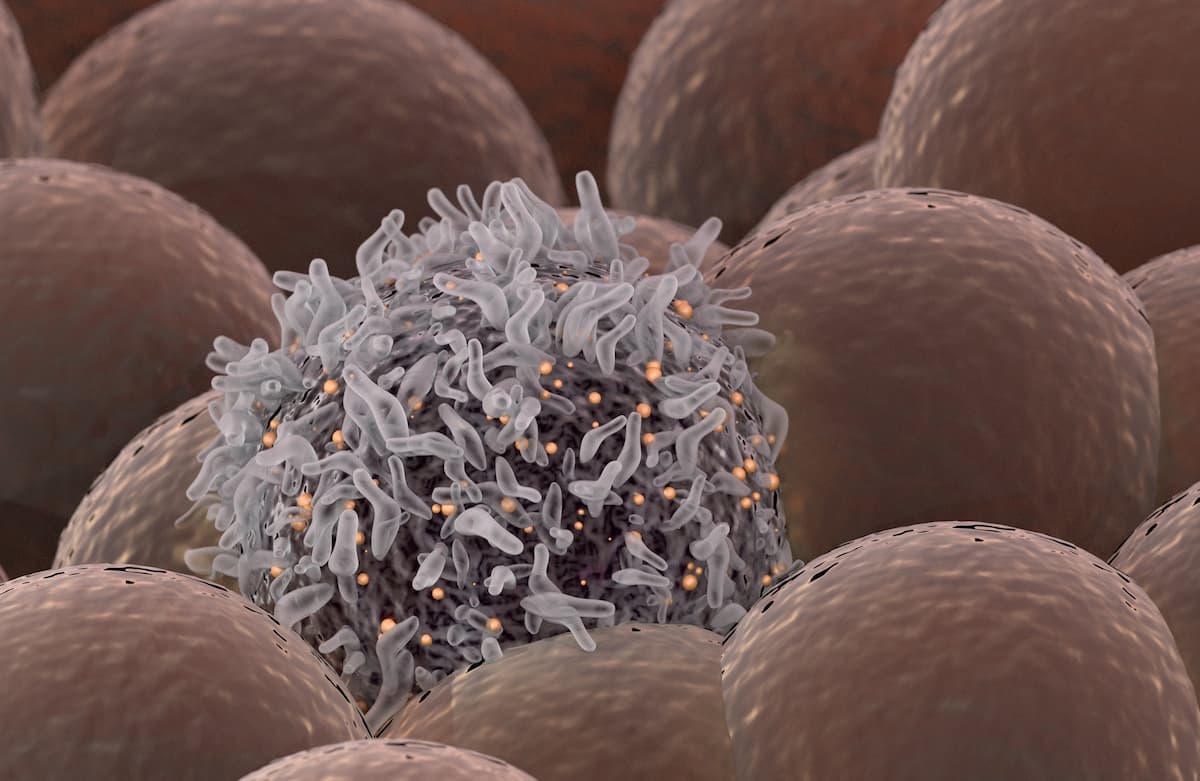Tebentafusp Continues to Demonstrate Benefit in Metastatic Uveal Melanoma
Results from a long-term analysis of the phase 3 IMCgp100-202 trial indicate that tebentafusp results in better disease control and long-lasting responses in those with HLA-A*02:01–positive, previously untreated metastatic uveal melanoma.
“This updated analysis confirms that the [OS] benefit with tebentafusp, as compared with the investigator’s choice of single-agent pembrolizumab [Keytruda], ipilimumab [Yervoy], or dacarbazine, persisted after a follow-up of at least 3 years," according to the authors of the the phase 3 IMCgp100-202 trial (NCT03070392).

Treatment with tebentafusp-tebn (Kimmtrak) yielded a long-lasting overall survival (OS) benefit in patients with HLA-A*02:01–positive, previously untreated metastatic uveal melanoma, according to data from a 3-year analysis of the phase 3 IMCgp100-202 trial (NCT03070392).
Investigators reported a median OS of 21.6 months (95% CI, 19.0-24.3) among patients treated with tebentafusp compared with 16.9 months (95% CI, 12.9-19.5) in the control arm (HR, 0.68; 95% CI, 0.54-0.87). Additionally, 72%, 45%, and 27% of patients were alive at 1 year, 2 years, and 3 years, respectively, in the tebentafusp group compared with 60%, 30%, and 18% in the control group.
“In the primary analysis in this trial, tebentafusp showed an [OS] benefit in patients with metastatic uveal melanoma,” the authors wrote. “This updated analysis confirms that the [OS] benefit with tebentafusp, as compared with the investigator’s choice of single-agent pembrolizumab [Keytruda], ipilimumab [Yervoy], or dacarbazine, persisted after a follow-up of at least 3 years.”
The study included patients who were 18 years or older with HLA-A*02:01 positivity that was confirmed via central assay and metastatic disease confirmed via histologic or cytologic analysis. Moreover, patients needed to have received no previous systemic or liver-directed treatment for metastases, an ECOG performance status of 0 or 1, and at least 1 measurable lesion.
The global, open-label phase 3 trial had a 2:1 randomization to either the tebentafusp cohort or investigator’s choice cohort, which included several single-agent treatments such as pembrolizumab, ipilimumab, or dacarbazine.
Intravenous tebentafusp was administered at a step-up dose of 20 μg on day 1 and 30 μg on day 8 followed by a weekly dose of 68 μg. There were several potential monotherapies that were administered in the control arm. This included 2 mg/kg of intravenous pembrolizumab on day 1 of every 21-day cycle; 3 mg/kg of intravenous ipilimumab on day 1 of every 21-day cycle for up to a maximum of 4 doses; and 1000 mg/m2 of intravenous dacarbazine on day 1 of every 21-day cycle.
The study’s primary end point was OS with a secondary end point of progression-free survival (PFS).
Investigators enrolled 378 patients between March 2017 to June 2020 who were randomly assigned to either the tebentafusp arm (n = 252) or control arm (n = 126); in the control arm, 103 patients received pembrolizumab, 16 received ipilimumab, and 7 received dacarbazine. In total, 7 and 15 patients in each respective arm did not receive treatment.
Investigators reported that demographic and baseline characteristics were well balanced between arms.
The study had a median follow-up of 43.3 months. Fifty-seven percent of patients in the experimental arm received treatment past initial radiographic progression compared with 25% of those in the standard-of-care arm. Additionally, 16 patients crossed over from the control arm to receive tebentafusp. The median duration of crossover treatment was 4.3 months.
Investigators reported several baseline factors associated with improved OS in the tebentafusp arm such as an ECOG performance status of 0, lactate dehydrogenase and alkaline phosphatase levels within a normal range, a largest metastatic lesion size of less than 8 cm in diameter, and a longer time since primary diagnosis.
In terms of additional study findings, the overall response rate was 11% in the experimental arm and 5% in the control arm. The median time to response was 2.9 months (range, 1.2-22.2) vs 4.1 months (range, 2.0-11.8) in each respective cohort, and the median duration of response was 11.1 months vs 9.7 months. Nine patients in the tebentafusp arm maintained a response at 18 months compared with no patients in the standard-of-care arm. Investigators also reported a median PFS of 3.4 months (95% CI, 3.0-5.4) vs 2.9 months (95% CI, 2.8-3.0), respectively (HR, 0.76; 95% CI, 0.60-0.97).
Investigators did not report any new types of adverse effects (AEs) associated with long-term tebentafusp treatment. Common any-grade adverse effects in the experimental cohort included rash (83%), pyrexia (76%), pruritus (70%), and hypotension (38%). Additionally, high-grade AEs were reported in 47% of patients, with the most common toxicity being rash (19%) and aspartate aminotransferase increase (6%).
Reference
Hassel JC, Piperno-Neumann S, Rutkowski P, et al. Three-year overall survival with tebentafusp in metastatic uveal melanoma. N Engl J Med. 2023;389:2256-2266. doi:10.1056/NEJMoa2304753
Newsletter
Stay up to date on recent advances in the multidisciplinary approach to cancer.